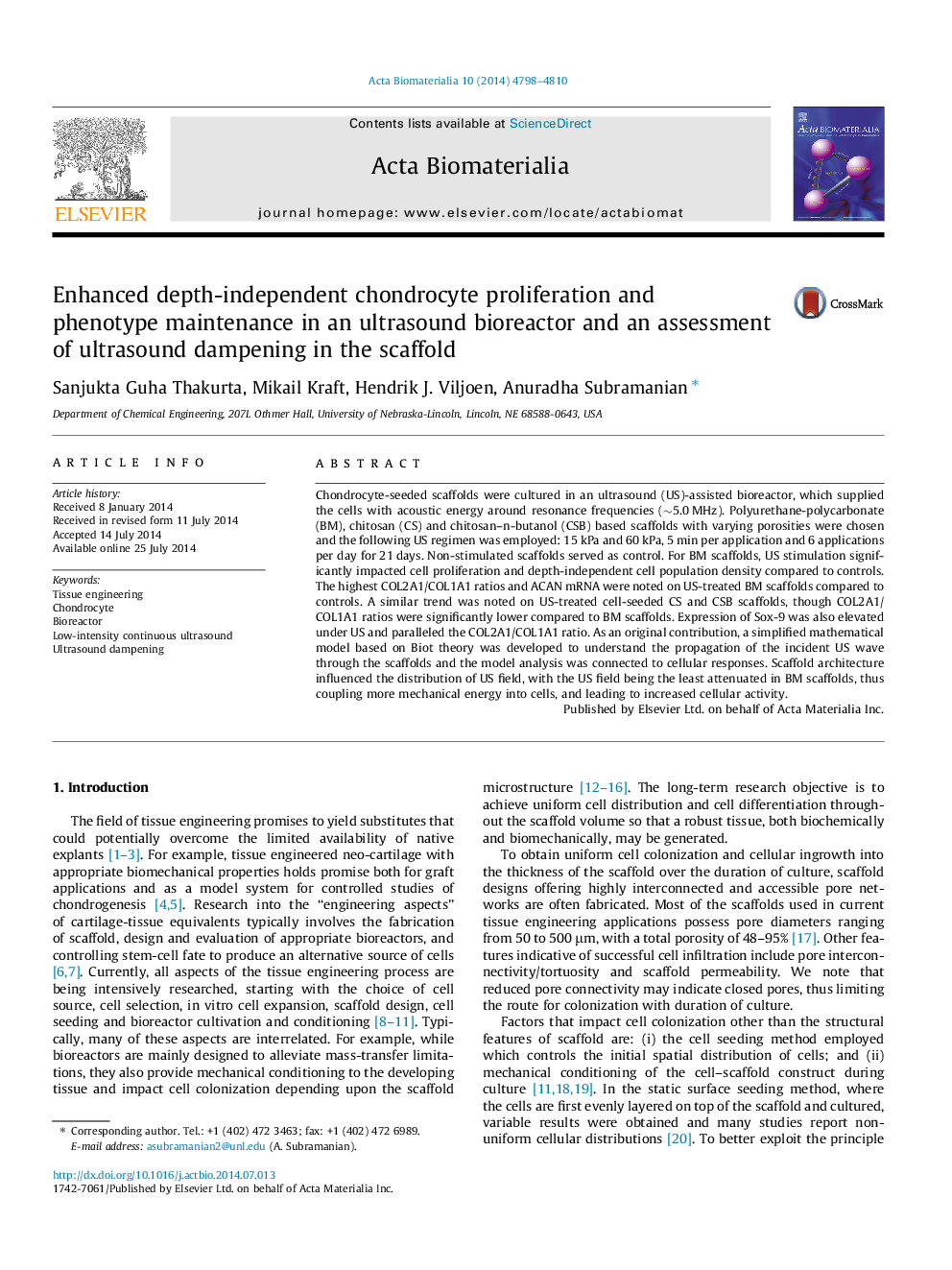| Article ID | Journal | Published Year | Pages | File Type |
|---|---|---|---|---|
| 10159061 | Acta Biomaterialia | 2014 | 13 Pages |
Abstract
Chondrocyte-seeded scaffolds were cultured in an ultrasound (US)-assisted bioreactor, which supplied the cells with acoustic energy around resonance frequencies (â¼5.0Â MHz). Polyurethane-polycarbonate (BM), chitosan (CS) and chitosan-n-butanol (CSB) based scaffolds with varying porosities were chosen and the following US regimen was employed: 15Â kPa and 60Â kPa, 5Â min per application and 6 applications per day for 21Â days. Non-stimulated scaffolds served as control. For BM scaffolds, US stimulation significantly impacted cell proliferation and depth-independent cell population density compared to controls. The highest COL2A1/COL1A1 ratios and ACAN mRNA were noted on US-treated BM scaffolds compared to controls. A similar trend was noted on US-treated cell-seeded CS and CSB scaffolds, though COL2A1/COL1A1 ratios were significantly lower compared to BM scaffolds. Expression of Sox-9 was also elevated under US and paralleled the COL2A1/COL1A1 ratio. As an original contribution, a simplified mathematical model based on Biot theory was developed to understand the propagation of the incident US wave through the scaffolds and the model analysis was connected to cellular responses. Scaffold architecture influenced the distribution of US field, with the US field being the least attenuated in BM scaffolds, thus coupling more mechanical energy into cells, and leading to increased cellular activity.
Related Topics
Physical Sciences and Engineering
Chemical Engineering
Bioengineering
Authors
Sanjukta Guha Thakurta, Mikail Kraft, Hendrik J. Viljoen, Anuradha Subramanian,
